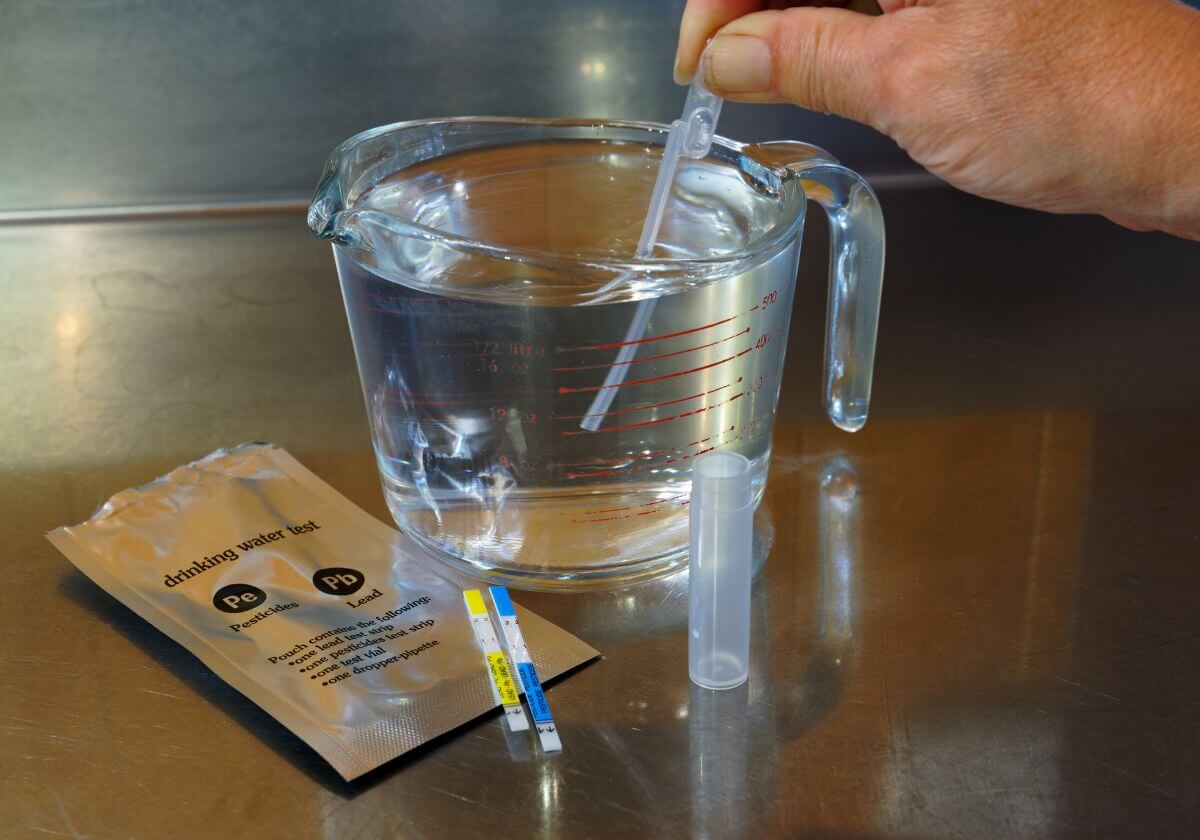A water softener is a unique filtration system that removes natural minerals, such
as magnesium and calcium, from
hard water . Many people use water softeners because
they produce soft water for faster and gentler washing and bathing. Some evidence also suggests that soft water
helps home appliances like dishwashers and coffee makers to last longer.
Unfortunately, the downside to water softeners is they do not produce healthy
drinking water for people. Even though they remove hard minerals, water softeners still leave behind many
harmful substances in the water. The reason is that water softeners are not traditional filtration systems like
reserve osmosis
filters that remove chemicals and toxic substances. Instead, they only remove the hard minerals while
leaving most other contaminants behind.
Understanding How a Water Softener Works
In layperson’s terms, a water softening system uses several tiny resin beads to
filter out the hard minerals as water passes through the beads in the water tank. Since the main water line
connects to the water softener, all the water coming into your home must pass through the tank first. That is
where the hard water converts into soft water before coming out of the faucets, showers, and other water-based
appliances and fixtures.
The tiny resin beads retain the hard minerals extracted from the water. However, to
remove the minerals from the beads, the water softener uses salt to clean them out because it forces sodium into
the beads while forcing magnesium and calcium out of them. Once the beads are free of the hard minerals, the
beads cycle back to soften more water coming into the tank through the main water line.
The Concerns About Drinking Water from a Water Softener
People should be aware of the potential health concerns associated with drinking
water from a water softener. Below is a breakdown of those concerns:
Potential Cardiovascular Health Issues from the Sodium
As described above, water softeners use salt to clean their resin beads. All salt
contains sodium chloride, which can have positive and negative health effects for people. As salt replaces the
hard minerals in the water, the sodium levels of the water rise.
The human body does need to consume a minor level of sodium to sustain its nerve
and muscle functions. But if you consume too much sodium each day, it can raise your blood pressure and increase
your risk of developing severe cardiovascular health problems like heart attack and stroke.
Regularly drinking soft
water with sodium in it would
certainly raise your blood pressure to unhealthy levels. People without existing high blood pressure issues may
be able to get away with drinking soft water. On the other hand, those with hypertension or existing high blood
pressure may develop severe cardiovascular health problems in the near future.
Most Harmful Contaminants Remain in the Water
Water softeners do not remove the common harmful contaminants found in the tap
water that comes in through the main water line. Here are some examples of these harmful contaminants:
- Fluoride
- Lead
- Arsenic
- Chlorine
- Bacteria
- Viruses
- Parasites
- Pesticides
Local water treatment facilities are supposed to filter out harmful contaminants
before supplying public water to customers. One of the ways they do this is by adding chemicals like chlorine to
the water to kill any existing bacteria and viruses in it. Unfortunately, these chemicals are still harmful to
the people who end up consuming the water.
The potential health risks associated with these harmful contaminants include
reproductive problems, nervous system malfunction, gastrointestinal illnesses, neurological disorders, and
possibly even cancer.
Why a Reverse Osmosis System Is Better
A reverse osmosis system is required to produce the safest drinking water because
it removes 99% of contaminants and minerals from the water.
The process basically involves pushing water through a semi-permeable membrane to
filter out the contaminants and minerals. When the water reaches the semi-permeable membrane, it only allows
pure water molecules to pass through the membrane without other contaminants or minerals included.
Here is a breakdown of the benefits of drinking water from a reverse osmosis water
filtration system:
Healthier Water for Your Body
Reverse osmosis is one of the most popular water purification methods because it
can remove over 99 percent of harmful contaminants from the tap water, including the chlorine and disinfectants
that water companies add to eliminate bacteria. This results in pure water containing no bacteria or
disinfectants whatsoever.
As a result, there are no health risks associated with drinking water from a
reverse osmosis water filtration system. You do not even need to worry about the sodium content in the water
because most of the salt content is reduced as well.
Tastes Great
Minerals and contaminants can make water taste bitter and strange. But when those
minerals and contaminants are removed from the water by reverse osmosis, the water ends up tasting pure and
fresh. That makes the water suitable to use not only for drinking but also for cooking.
For example, whenever you cook rice or brew coffee with purified water from reverse
osmosis, it will taste phenomenally better than it does from tap water or soft water. You may even notice a
fresher odor to the water as well.
Cost Effective
Another added benefit to reverse osmosis is the long-term cost savings it offers.
Here is how you will save money by using a reverse osmosis water filtration system:
- The purified water produced will save you money from having to purchase purified water in bottles. You
also save money by avoiding more trips to the grocery store and spending more money on gas.
- The reduced risk of health problems means fewer costly visits to the doctor’s office or hospital. Invest
in a reverse osmosis system can safeguard your and your family’s well-being in the long run.
- The Waterdrop reverse osmosis system has a higher pure-to-drian ratio, which means less waste water will
be produced when you use the system. You can save your water bill accordingly.
A one-time investment in a reverse osmosis water filtration system can deliver
several years of cost savings to your home.
Conclusion
Now you know why drinking water from a water softener is not good for your health
or finances. A reverse osmosis system is a more beneficial water filtration method because it is better for your
health and does not cost as much to maintain. Come and choose the right one for your home right now at the best
price!






























































































































